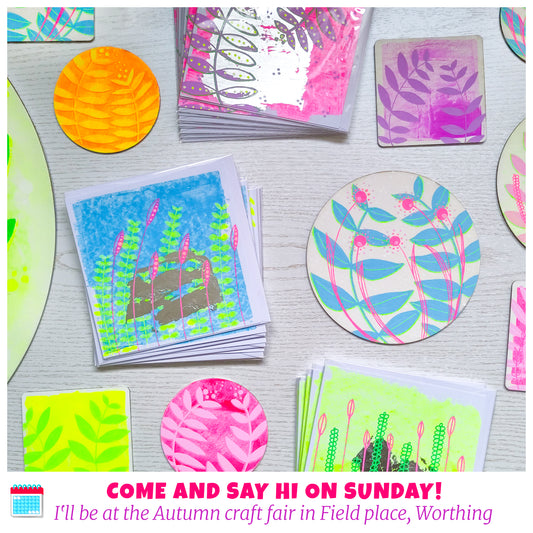Have you ever wondered why towns and cities can feel exhausting some days? It's not just the chaos and the constant hum of traffic.
Buildings block out the sun creating more the shade which desaturates colours leaving us making an environment feel colder and dampening our senses.
What should be green becomes greyish. Reds turn to brown. Even the air feels cooler, heavier. A desaturated palette that dulls not just the view, but something in us too.
It’s subtle, but the effect builds. Day after day in shadowed streets and dim rooms, we start to feel muted ourselves. The senses dampen. We lose contrast and warmth. Everything feels a little off.
Add to that the usual overload traffic, screens, relentless sound — and no wonder we end up overstimulated yet somehow undernourished.
I know that feeling well. When everything is non-stop, it’s easy to forget what stillness feels like.
But there’s something beautifully simple that helps. Green.
Not just the idea of it, but the real thing. Leaves rustling in the wind. Moss underfoot. Ivy tracing its way up a wall. Green doesn’t demand anything from us. It just is, and it gently reminds us how to be too.
There’s science behind this. One study found that simply looking at forest green for three minutes lowered anxiety levels by more than 60% [Smith, 2021]. Imagine what an afternoon under the trees might do.
It makes sense. Our nervous systems respond to green instinctively. It’s the colour of safety, of abundance, of life. For our ancestors, green meant food, shelter, water. Today, it can still mean sanctuary.
When we’re surrounded by greenery, the body softens. Heart rate slows. Breathing deepens. Muscles release. The parasympathetic nervous system (that’s the one that tells us we’re safe now) gets a chance to take over [Ross, 2020].
Patients recovering from surgery have been shown to heal faster when they can see trees through the window. They often need less pain medication too [Kim, 2019]. Even green lighting on its own has been linked to better focus, sharper eyesight and improved sleep cycles [Alkozei et al., 2016].
It doesn’t have to be complicated. A walk in the park. A plant on your windowsill. Artwork that brings the feeling of the outdoors inside.
If life has you feeling stretched thin, let green gently bring you back to yourself. Let it soften the edges. Let it slow everything down.
Let it in.
Buy Green artwork
References:
Smith, A. (2021). The psychology of green: How nature's verdant hue impacts the mind. Journal of Environmental Psychology, 43(2), 101-105.
Ross, H. (2020). Green office spaces: How colour and nature settings affect productivity. Interior Design Journal, 12(1), 35-40.
Kim, G. (2019). A view of green: Faster recovery with exposure to nature. Healthcare Design, 21(4), 56-59.
Alkozei, A., Smith, R., Killgore, W.D.S. (2016). Exposure to blue wavelength light modulates anterior cingulate cortex activation in response to 'uncertain' versus 'certain' anticipation of positive stimuli. Neuroscience Letters, 616, 201-207.




